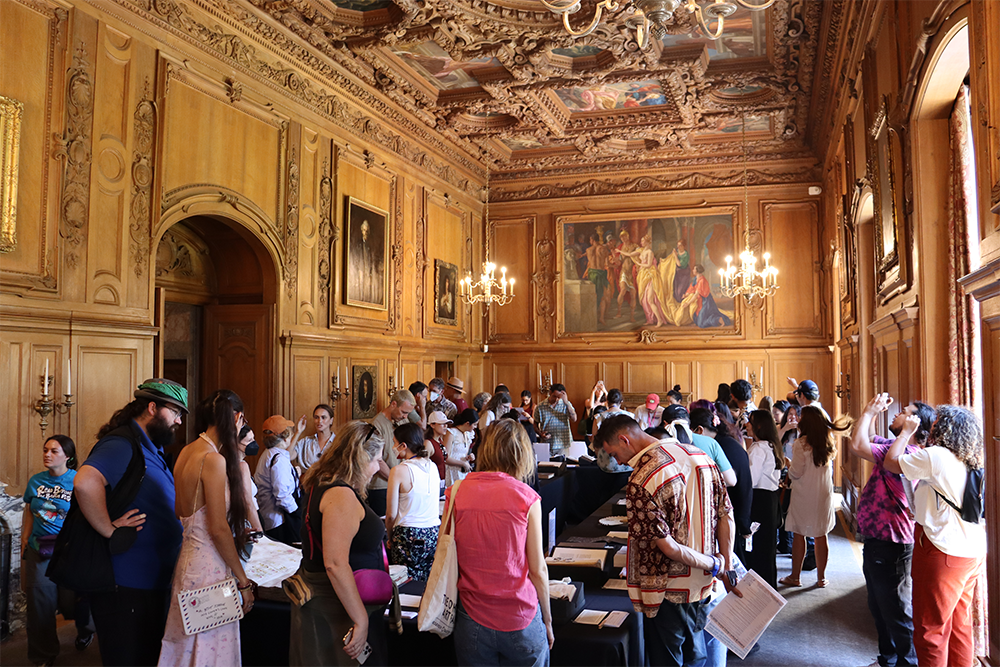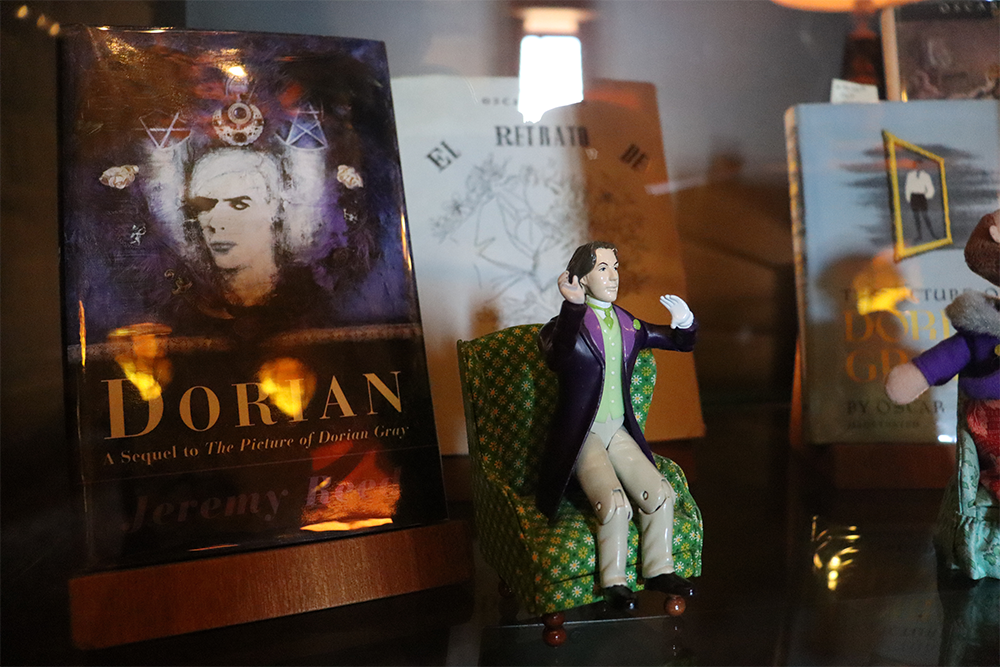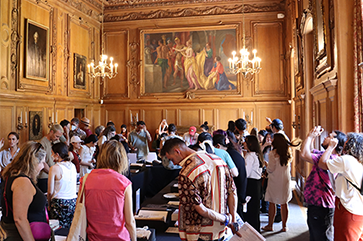‘Everybody’s place’: Clark Library open house delights guests
More than 1,100 visitors flock to special event

David Eng
Visitors to the UCLA William Andrews Clark Memorial Library browsing through collections.
By Jonathan Riggs | October 23, 2023
“A library is a focal point, a sacred place to a community; and its sacredness is its accessibility, its publicness,” author Ursula K. Le Guin famously said. “It’s everybody’s place.”
To celebrate one such world-class resource, the UCLA William Andrews Clark Memorial Library held its annual open house and adopt-a-book fair Oct. 7, inspiring more than 1,100 people to join in person.
“The event was a resounding success, with the vast majority of participants being first-time attendees. Everyone was deeply engaged with the materials on display and put forward astute questions and observations about book history,” said Anna Chen, the Clark’s head librarian. “We were thrilled to connect so many people to histories they identified with.”
“There were people of all ages, photographing themselves and their friends with the architecture and in fancy attire and gravitating to the south book room where Clark’s piano sits,” said Bronwen Wilson, UCLA’s Edward W. Carter Chair in European Art and the director of both the Center for 17th– and 18th-Century Studies as well as the William Andrews Clark Memorial Library at UCLA. “The adopt-a-book component inspired many as well to contribute any amount from $5 and up to support the acquisition, preservation and conservation of our collections.”
Coming from as far away as San Diego and as close as down the street, attendees were able to explore the library and its grounds, ask questions of experts, participate in a scavenger hunt and lawn games, and dig deeper into their own specific interests. Cabinetmakers studied the library’s intricate hand-carved woodwork; a former resident of Butte, Montana — where the Clark family made its fortune — searched for his old apartment in the pages of the library’s turn-of-the-century Sanborn fire insurance maps; and craft-lovers soaked up a 19th-century Victorian scrapbook assembled by a mother and daughter.
In addition, many of the visitors responded to the queer identity of the library as reflected in its collections and history. For example, the men painted on the ceiling of the library’s vestibule all wear the face of Clark’s lover Harrison Post, who also held the title of assistant librarian. In addition, thanks to Clark’s large-scale acquisition of Oscar Wilde’s papers, the Clark holds the largest and most significant Wilde collection in the world, and is an important repository for the study of LGBTQ+ history.

David Eng
The Clark holds the largest and most significant Oscar Wilde collection in the world, including these whimsical items.
Of particular interest to all was the seed library, which enables visitors to plant Clark-related seeds — for example, sunflowers, selected for their prominence in Wilde iconography and basil, the namesake of a character in Wilde’s “The Picture of Dorian Gray.”
So heightened was anticipation for the event that after attendance was capped, more than 2,600 people signed up for a waitlist — an overwhelming response to the opportunity to visit the Clark and view items from the collection. Part of the excitement was sparked by a viral TikTok created by Remy Solomon, a TV writer who first became aware of the Clark while writing a script on Wilde.
“I had a feeling people would be as excited by this beautiful little library as I was. To find such a special place, smack dab in the middle of our city…it’s magical,” Solomon said. “I was stunned by the community’s turnout. The line wrapped around the entire building.”
“Besides getting to tour the library, I had a chance to talk with several of the wonderful librarians about how to further raise the Clark’s public profile,” she added. “In an age of so much information, it can be hard for older institutions to figure out how to cut through the digital noise, and I’m honored to have played a part in helping the Clark get the attention it deserves.”
Ultimately, this event highlighted the heart of the Clark’s mission: to make the shared cultural record as widely available as possible.
“We support UCLA’s mission of openness and inclusion and are committed to empowering broad research and engagement within special collections,” said Chen. “This open house is part of a slate of events and projects whose goal is to increase and diversify engagement with the library and broaden its communities of users.”




